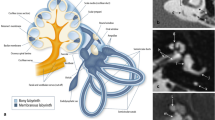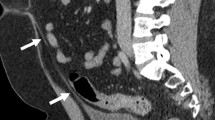Summary
Obstructive nephropathy ultimately leads to end-stage renal failure. Renovascular lesions are involved in various nephropathies, and most renal diseases have an ischemic component that underlies the resulting renal fibrosis. The aim of this study was to investigate whether morphological changes occur in the renal vasculature in hydronephrosis and the possible mechanisms involved. A model of complete unilateral ureteral obstruction (CUUO) was used. Experimental animals were divided into five groups: a normal control group (N) and groups of animals at 1st week (O1), 2nd week (O2), 4th week (O4) and 8th week (O8) after CUUO. Blood pressure was measured, renal arterial trees and glomeruli were assessed quantitatively, and renovascular three-dimensional reconstruction was performed on all groups. Glomerular ultrastructural changes were examined by transmission electron microscopy. The results showed that the systolic blood pressure was significantly increased in the obstructed groups (O1, O2, O4 and O8). Three-dimensional reconstruction showed sparse arterial trees in the O8 group, and a tortuous and sometimes ruptured glomerular basement membrane was found in the O4 and O8 groups. Furthermore, epithelial media thickness and media/lumen ratio were increased, lumen diameters were decreased, and the cross-sectional area of the media was unaltered in the segmental renal artery, interlobar artery and afferent arterioles, respectively. In conclusion, renal arterial trees and glomeruli were dramatically altered following CUUO and the changes may be partially ascribed to vascular remodeling. Elucidation of the molecular mechanisms of renovascular morphological alterations will enable the development of potential therapeutic approaches for hydronephrosis.
Similar content being viewed by others
References
Bascands JL, Schanstra JP. Obstructive nephropathy: inights from genetically engineered animals. Kidney Int, 2005,68(3):925–937
Meyrier A, Hill GS, Simon P. Ischemic renal diseases: new insights into old entities. Kidney Int, 1998,54(1):2–13
Venkatachalam MA, Cotran RS, Karnovsky MJ. An ultrastructural study of glomerular permeability in aminonucleoside nephrosis using catalase as a tracer protein. J Exp Med, 1970,132(6):1168–1180
Lemley KV, Lafayette RA, Safai M, et al. Podocytopenia and disease severity in IgA nephropathy. Kidney Int, 2002,61(4):1475–1485
Gattone VH, Sale RD. Quantitative vascular casting of the post-ischemic hydronephrotic kidney. Scan Electron Microsc, 1986, (Pt2):549–556
Ninomiya H, Nakamura T. Renal vascular changes in hydronephrosis in rats: scanning electron microscopy of resin casts of glomerular capillaries. Jikken Dobutsu, 1988,37(2):153–158
Nishikawa K, Morrison A, Needleman P. Exaggerated prostaglandin biosynthesis and its influence on renal resistance in the isolated hydronephrotic rabbit kidney. J Clin Invest, 1977,59(6):1143–1150
Albrightson CR, Evers AS, Griffin AC, et al. Effect of endogenously produced leukotrienes and thromboxane on renal vascular resistance in rabbit hydronephrosis. Circ Res, 1987,61(4):514–522
Miao CY, Xu LP, Liu JG, et al. Frequent ventricular premature beats increase blood pressure variability in rats. Acta Pharmacol Sin, 2004,25(5):545–553
Kimura K, Tojo A, Matsuoka H, et al. Renal arteriolar diameters in spontaneously hypertensive rats: Vascular cast study. Hypertension, 1991,18(1):101–110
Nakamura M, Notoya M, Kohda Y, et al. Effects of efon dipine hydrochloride on renal arteriolar diameters in spotaneously hypertensive rats. Hypertens Res, 2002,25(5):751–755
Gattone VH, Evan AP, Willis LR, et al. Renal afferent arteriole in the spontaneously hypertensive rat. Hypertnsion, 1983,5(1):8–16
Wilson SK, Heptinstall RH. Effects of acute, angiotnsin-induced hypertension on intrarenal arteries in the rat. Kidney Int, 1984,25(3):492–501
Rhodin JA. Fixation of microvasculature for electron microscopy. Microvasc Res, 1973,5(3):285–291
De Waard D, Dik P, Lilien MR, et al. Hypertension is an indication for surgery in children with ureteropelvic junction obstruction. J Urol, 2008,179(5):1976–1978
Ameur A, Zarzur J, Jira H, et al. Hydronephrosis arterial hypertension: Report of 4 cases. Ann Urol, 2002,36(3):157–161
Abramson M, Jackson B. Hypertension and unilateral hydronephrosis. J Urol, 1984,132(4):746–748
Carlström M. Causal link between neonatal hydronephrosis and later development of hypertension. Clin Exp Pharmacol Physiol, 2010,37(2):e14–23
Pettersson BA, Aperia A, Elinder G. Pathophysiological changes in rat kidneys with partial ureteral obstruction since infancy. Kidney Int, 1984,26(2):122–127
Carlström M, Wåhlin N, Sällström J, et al. Hydronehrosis causes salt-sensitive hypertension in rats. J Hypertens, 2006,24(7):1437–1443
Carlström M, Sällström J, Skøtt O, et al. Hydronephrosis causes salt-sensitive hypertension and impaired renal concentrating ability in mice. Acta Physiol, 2007,189(3):293–301
Sánchez LG, Tapia E, Johnson RJ, et al. Glomerular hemodynamic changes associated with arteriolar lesions and tubulointerstitial inflammation. Kidney Int, 2003,(86):S9–14
Spiro D. The structural basis of proteinuria in man: electron microscopic studies of renal biopsy specimens from patients with lipid nephrosis, amyloidosis, and subacute and chronic glomerulonephritis. Am J Pathol, 1959,35(1):47–73
Intengan HD, Schiffrin EL. Vascular remodeling in hypertension: roles of apoptosis, inflammation, and fibrsis. Hypertension, 2001,38(3 Pt 2):581–587
Risler NR, Cruzado MC, Miatello RM. Vascular remodeling in experimental hypertension. Sci World J, 2005,12(5):959–971
Van den Akker J, Schoorl MJC, Bakker ENTP, et al. Small artery remodeling: current concepts and questions. J Vasc Res, 2010,47(3):183–202
Author information
Authors and Affiliations
Corresponding author
Additional information
This project was supported by the Natural Science Foundation of Hubei Province, China (No. 2008CDA054).
Rights and permissions
About this article
Cite this article
Li, Wq., Dong, Zq., Zhou, Xb. et al. Renovascular morphological changes in a rabbit model of hydronephrosis. J. Huazhong Univ. Sci. Technol. [Med. Sci.] 34, 575–581 (2014). https://doi.org/10.1007/s11596-014-1318-9
Received:
Revised:
Published:
Issue Date:
DOI: https://doi.org/10.1007/s11596-014-1318-9




